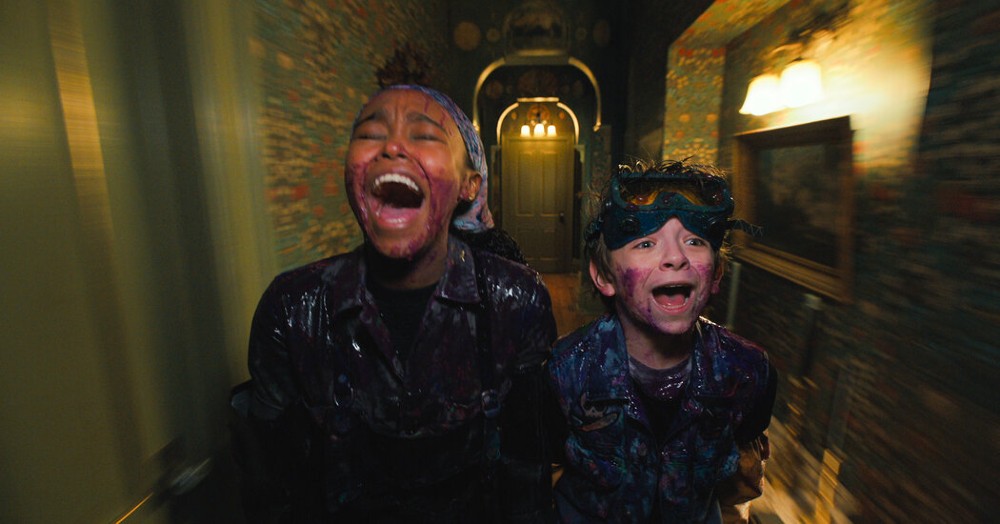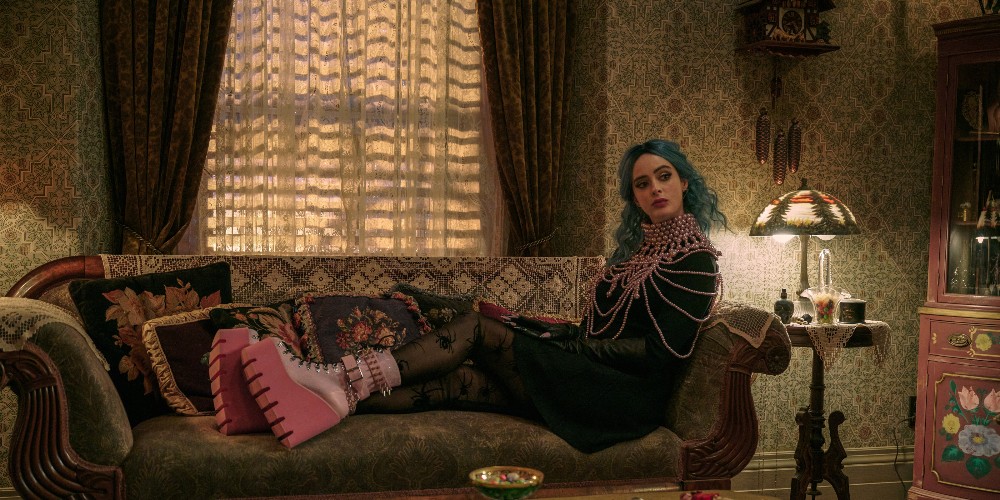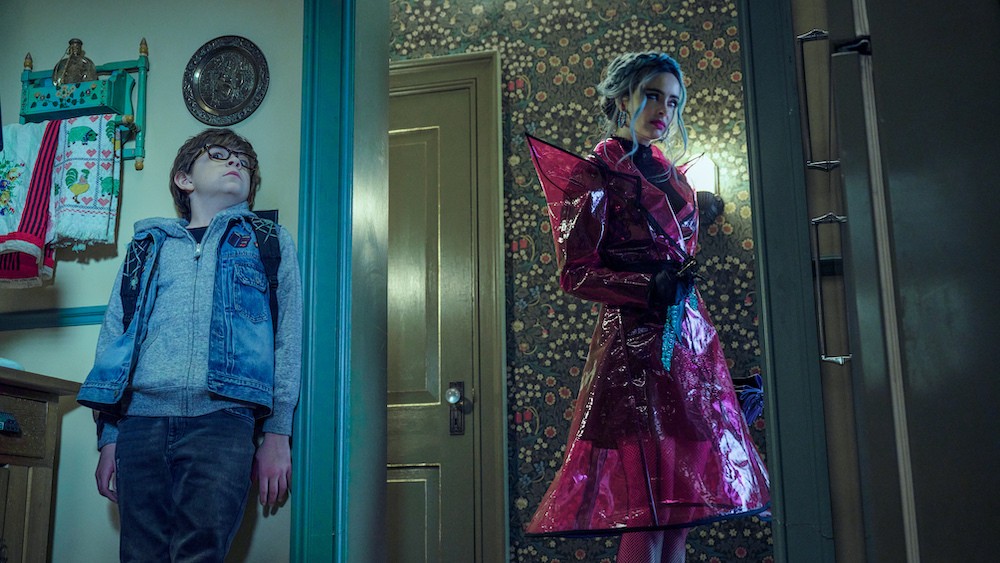Nightbooks, directed by David Yarovesky and written by Mikki Daughtry and Tobias Iaconis, is an adaptation of the children’s book by J.A. White. The film follows Alex (Winslow Fegley), a young boy obsessed with scary stories and all things horror until one day, he doubts himself and vows never to write another scary story. This is the same day he is lured in by a witch Natacha (Krysten Ritter) and must write scary stories to survive. Once trapped, he meets up with another kid, Yasmin (Lidya Jewett) who has given up the hopes of escape.
Kid-Friendly Scares
The child-friendly horror is a somewhat rare thing, especially in the realm of movies with films like The House With a Clock in Its Walls and Goosebumps being some of the only somewhat recent releases. Having another addition to this small yet in-demand genre is wonderful. Also, the timing is perfect for parents and children wanting to start celebrating the spooky season. In this house, we celebrate Halloween through all of September and October.
Nightbooks succeeds in its ability to craft fun and scary moments that will keep horror-loving children entertained without going too far. But the biggest success is knowing that horror-loving kids want some amount of fright. So often films in this arena do not go far enough, assuming that any amount of fright is too much for every child.
Nightbooks is produced by Sam Raimi through Ghost House Pictures, and its blend of humor, memorable creature design, and POV forest shots brings to mind Evil Dead II. The scares in Nightbooks are well-crafted and the cinematography of the film captures different eras and styles of horror from the aforementioned Evil Dead style POV shots to silent horror and the art style of Fangoria covers and the nostalgic pull of Creepshow.

When Alex starts to tell his stories, we are taken into a world of silent horror inspired title cards and narration over the top of sets resembling horror movies kids would make with their friends, exploring their adoration and love for horror.
Certain moments throughout the film are reminiscent of classic horror moments, but shown in a way children can feel the dread without running away. One especially memorable moment comes in the form of a character turned away, so we only see her back combined with the uncomfortable sound of eating. This takes a classic of the zombie genre in a family-friendly direction.
Nightbooks references The Lost Boys throughout from Alex’s love for the movie and uses the song Cry Little Sister in a powerful scene showcasing Alex and Yasmin standing up for themselves. These moments referencing a classic horror help establish Alex’s character while also giving nostalgic moments for older viewers to appreciate. Seeing Alex lured in with The Lost Boys playing on an old television and a slice of pumpkin pie on a plate made me know from the beginning that I was in for a fun and relatable film experience.
Theme of Acceptance in Nightbooks
Nightbooks deals heavily with feeling like an outcast and how this leads to not appreciating what makes us unique. At the center of Alex’s story is his decision to stop writing scary stories and how this reflects on his feelings about himself. The film explores ideas of doubting ourselves and wishing we were more normal, highlighting the dangers that come from not staying true to yourself.
As the film progresses and we learn more about Yasmin, her Ethiopian heritage is brought into the narrative. She was captured by Natacha through the smells and comfort of Dora Wat, an Ethiopian chicken stew. Lidya Jewett is Ethiopian-American and it is wonderful to see her own culture represented in the character, especially when so many films ignore specific references to culture. Having the lead in a children’s film embrace and discuss her culture is a memorable moment of diversity in cinema.
As the film progresses, Yasmin has more moments to shine. The film explores the different ways she had to overcome feelings of being an outcast because of her culture. The friendship between Yasmin and Alex develops naturally throughout the film and does a wonderful job of showing people coming together and accepting each other.
Yasmin and Alex both have memorable moments where they accept themselves and showcase their unique strengths. Nightbooks gives each character moments to shine, and this even includes Natacha’s cat Lenore.
Costume, Creature, and Production Design
Nightbooks is a stylish entry into the children’s horror lexicon complete with colorful costumes and wonderfully spooky locations. The film includes old, humongous libraries complete with thousand year old books, creepy gardens with deadly black-lit plants, and long, deserted hallways.
In the beginning of Nightbooks, we are introduced to Alex through his bedroom decorated floor-to-ceiling with odes to horror from the A Nightmare on Elm Street poster to Fangoria magazines stacked around his room and classic Universal Monsters figurines.

In addition to production design that perfectly captures the horror of the unknown, Nightbooks has captivating costume design, especially with the character of Natacha. Her various outfits throughout the film highlight the campy and fun nature of being a witch. Krysten Ritter plays the character so well, perfecting her witch cackle and showing the fun side of a character like Natacha.
The film also crafts creepy creatures that will both scare and entice horror-oriented children, maybe leading some adventurous viewers to want to explore more traditional horror films. The shredders have an especially memorable design and lead to a particularly frightening moment.
Nightbooks: Conclusion
Nightbooks is a perfect entry-level horror film for children showing interest in the genre with its well-crafted scares, references to classic horror, and theme of accepting yourself — no matter how different. Every frame of Nightbooks comes to life with a significant visual style celebrating horror and the nostalgia of different eras of the genre.

Comments